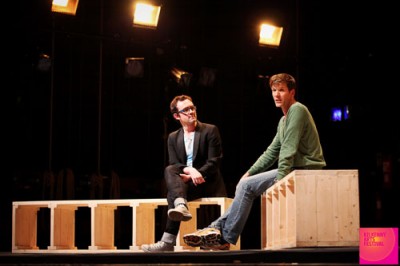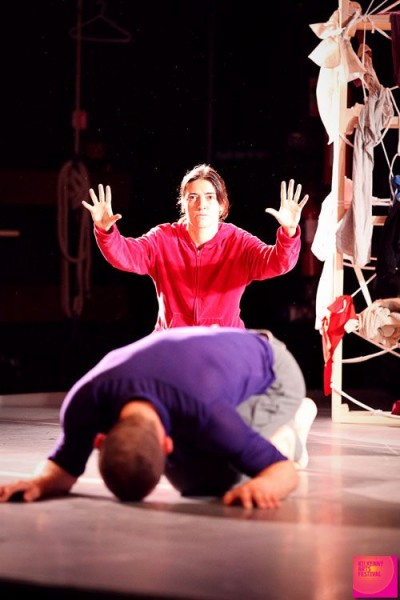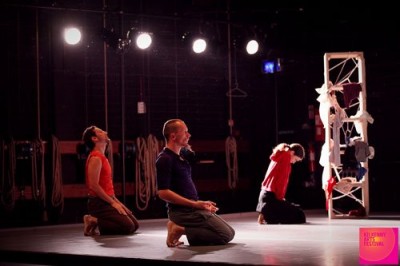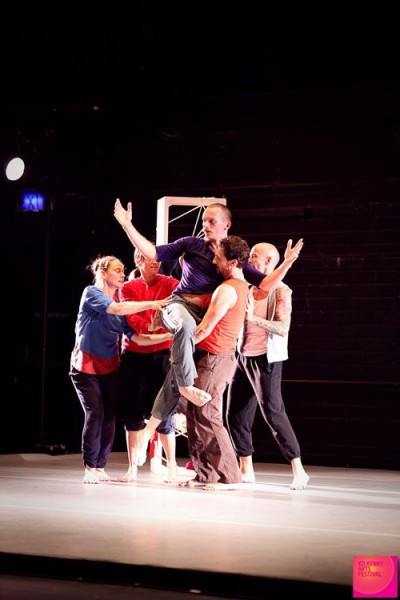Performing in the Kilkenny Arts Festival has been the start of working out how Tabernacle continues beyond its initial performances in Dublin last May. It was my first visit to the Festival and it’s wonderful to see how a beautiful city welcomes a wide range of art forms. It’s been a very positive experience to have been programmed to present the work again and I’m very grateful to Tom Creed for having been willing to take that programming decision before Tabernacle was was even made. His confidence has ensured that the work can build a momentum of interest in the audience and hopefully ensure a longer life for Tabernacle.
There were challenges to presenting the work in Kilkenny. The Watergate Theatre has a smaller stage that Project’s and a proscenium arch that sets the work at a distance from the audience. In fact the work looked good in Sinéad’s revised lighting design but we still had to address the potential separation between performance and audience that we’d worked to avoid in Project. In Kilkenny, we didn’t have the chance to have open rehearsals or a local engagement that would help us feel connected with our audience in advance of the performances. However, we were lucky that many friends traveled to see the work so, in the end, we did have a community of support around the work.

The work was well received, as this review indicates but that doesn’t mean that it was an easy experience for audiences. When we had a post-show discussion last night, I was very aware of how people responded to the beauty of the images in the work and to the skill of the dancers, but how they were troubled by what they didn’t understand. People asked about having information or notes in advance to help them appreciate the work. I heard in their concern to understand a respect for the work and a belief that it was worth delving in to. But I also heard some frustration at not being told clearly what was going on.

I was troubled by a suggestion that the audience was excluded from the process that was more concerned with the experiences of the dancers and me. That suggestion bothered me because it is the opposite of the openness and welcome I’d wanted to extend. There is no dogma, no message because I want to invite people to make their own place in the work, in relation to it.
However I realise that some people find that openness too challenging. They feel that I am shirking my responsibility in some way by not signposting more clearly my position. Perhaps this non-directed openness is my position. I know that it is challenging. I know that I am asking an audience to work hard. But the dancers work very hard and we – audience and performers and I – make this work together.




Post a Comment